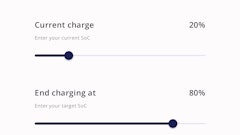
In September, the Logistics Manager’s Index (LMI) reads in at 52.4, up (+1.2) from August’s reading of 51.2. This is the second consecutive month of expansion following three straight readings of contraction from May-July.
While this is the fastest rate of expansion since February, a reading of 52.4 is still well below the all-time average of 62.9 and represents a very moderate level of expansion, according to the LMI released by researchers at Arizona State University, Colorado State University, Florida Atlantic University, Rutgers University, and the University of Nevada, Reno.
Key takeaways:
- The overall LMI is up slightly (+1.2) to 52.4, which represents a very moderate level of expansion. Moderate expansion might be an apt description of the U.S. economy overall. Labor force participation is increasing as the United States added 187,000 new jobs in August. While this is slightly above the pre-pandemic average from 2019, it is down from the explosive growth observed throughout 2022 and early 2023.
- Feelings of optimism continue around the U.S. economy as indicated by the University of Michigan’s consumer confidence measure reading it at 68.1 in September – up 16.2% from this time a year ago. This optimism is partially due to the continued slowing of inflation. That being said, the United States is still in better shape than many other places around the world. China continues to struggle with consumer sentiment and a crash in their exports and construction industries.
- Consumer spending remained strong through the summer as well. While this provides a hope that holiday spending will increase the movement of goods, there are a few potential obstacles on the horizon in the form of the resumption of student loan payments, the UAW strike, and a potential U.S. government shutdown. While a government shutdown was avoided in the last few hours of September, the matter will likely come up again in another 45 days, which could potentially coincide with the runup to black Friday and Cyber Monday.
- Warehousing may be looking toward a more sustainable pace of growth. Construction starts are down, with a relatively modest 110 million square feet starting builds in Q2 (much of it located in distribution hotbeds such as Dallas, Phoenix, and Atlanta). This may be partially because of the space available in distressed assets.
- Warehousing utilization is up (+3.1) to 60.9, the fastest rate of expansion for this metric in six months.
- California’s new regulations requiring trucks purchased after Jan. 1 to be electric is spurring orders for both electric and traditional diesel vehicles.


























